 "In 1539, the Knight Templars of Malta, paid tribute to Charles V of Spain,by sending him a Golden Falcon encrusted from beak to claw with rarest jewels...but pirates seized the galley carrying this token and the fate of the Maltese Falcon remains a mystery to this day...."
"In 1539, the Knight Templars of Malta, paid tribute to Charles V of Spain,by sending him a Golden Falcon encrusted from beak to claw with rarest jewels...but pirates seized the galley carrying this token and the fate of the Maltese Falcon remains a mystery to this day...." |
| Open your Golden Gate,and get me Rice-A-Roni! |
The classic 1941 version of John Huston’s The Maltese Falconwas hisfirst film as a writer and director, as well as being the third big-screen adaptation of Dashiell Hammett’s seminal detective novel about cynical San Francisco private detective Sam Spade, and how he gets embroiled in the quest for the Maltese Falcon, a black statuette that might be worth a fortune—or get the adventurers killed—or maybe both! The cast is a perfect quartet of crime—and the best, as many film fans agree! Check out this great Rogue’s Gallery:
*Humphrey Bogartas Sam Spade. Kids sure grow up fast! Who’d have thought Maud Humphrey’s darling baby boy, born on Christmas Day to a patrician New York City family, would become a Best Actor Oscar-winner particularly known for his roles as tough, complicated men, as well as eventually having a happy marriage with his co-star Lauren Bacall until Bogart’s death from cancer in 1957.
*Mary Astor(one of Team Bartilucci’s favorites) as the alluring but treacherous Brigid O’Shaughnessy. Fun Fact: Take a good look at the scene where Joel Cairo is leaving the theater; the movie marquee is for The Great Lie, for which Mary won the Best Supporting Actress Oscar! More about Mary shortly…
*Jerome Cowanas Miles Archer,Sam Spade’s ill-fated partner. The busy Cowan was also the District Attorney in Miracle on 34th Street, as well as Torrid Zone; Mr. Skeffinington; There’s Always a Woman; and many TV appearances.
*Sydney Greenstreet as Kaspar Gutman, a.k.a.“The Fat Man,” whose benevolent chuckles thinly disguise his ruthlessness. Ironically, despite his great performances with the famous husband and-wife team of Lunt & Fontanne, Greenstreet was a nervous wreck when it was time for his very first scene in the film, despite his many years as a renowned stage actor! On the Maltese Falcon set, Greenstreet begged his co-star: "Mary, dear, hold my hand. Tell me I won't make an ass of meself!" Huston was holding his breath, too! Luckily, Greenstreet performed his first scene flawlessly, and the renowned stage actor became an in-demand character actor and film star! Greenstreet was always a trouper despite his chronic illness, the kidney disorder Bright’s Disease, bless him. (I’m reminded of a gag by another of my favorites, the humorist and screenwriter S.J. Perelman: “I have Bright’s Disease, and he has mine!” But I digress….)
*Peter Lorre as the exotic and wily Joel Cairo, he of the gardenia scent, among other things. Lorre became a star in Fritz Lang’s searing drama M, andAlfred Hitchcock’s original 1934 version of The Man Who Knew Too Much. As an in-demand character actor, Lorre’s many roles ranged from dramas to comedies, including Crime & Punishment;All Through the Night;My Favorite Brunette; Casablanca; several pairings with Greenstreet and Lorre, including The Mask of Dimitrios;and The Verdict. Lorre was also the first James Bond villain, playing the evil Le Chiffe in a 1954 TV version of Casino Royale in the series Climax! (The decidedly un-British Barry Nelson played “Jimmy Bond”!)
Elisha Cook Jr. as Wilmer Cook, Kaspar Gutman’s weaselly henchman and gunsel (a word of many meanings). Whether the 5-foot-five Cook was comical, sinister, or poignant, he was always memorable and often a scene-stealer in such films as The Big Sleep;I Wake Up Screaming; The Killing; Electra Glide in Blue; and so much more! Fun Fact: Lee Patrick and Elisha Cook Jr. were the only cast members to reprise their original roles in the 1975 comedy spoof/sequel, The Black Bird, which Vinnie will be discussing!
Lee Patrick as Effie Perine, Sam’s trusty secretary and kind yet firm voice of reason. She too was a multifaceted actress, shining in such hits as Auntie Mameplaying bigoted boob Mrs. Upson; The 7 Faces of Dr. Lao; Dangerously They Live;Caged; Mildred Pierce; and Vertigo.
Gladys Georgeas Iva Archer, Miles Archer's hot but clingy widow, who's hoping to become Mrs. Spade, even though Sam's just not that into her! Ms. George earned an Oscar nomination for Valiant Is the Word for Carrie. She was also in Flamingo Road and The Best Years of our Lives.
 |
| Meet Miss Wonderly...Or is it LeBlanc? O’Shaughnessy?! Heck we'd retain her anytime! |
Sure, I’ve been a completest when it comes to watching all three versions of The Maltese Falcon for the past few weeks, and it’s been interesting and fun to watchall three versions to compare each of them, but let’s face it, the 1941 version is the best; accept no substitutes! Once I settled in to watch the DVD (because I never get tired of that, either), I said out loud, “Now this is more like it!” Even the opening credits are better, with the fabulous Maltese Falcon statue glaring in shadowy profile as Adolph Deutsch’s brassy main title music blares. Musical director Leo F. Forbstein really nailed it this time, blending suspense, foreboding, and wry wit. The fateful falcon’s background story scrolls up, lending “The Black Bird” a mythical aspect that the previous movie adaptations lacked. It’s no wonder John Huston’s take on Hammett’s tale put him on the map as a writer/director. For my money, the 1941 version has the best of everything in one package: the best private eye thriller; the best remake; the best Dashiell Hammett novel-to-movie adaptation; and the best nest-of-vipers cast, including the signature Humphrey Bogart role/performance!
 |
| Cairo tries to eliminate the middleman, the fool! |
 |
| Ah, shadows, a classic element of film noir! |
 |
| Sardonic Sam tells Miles Archer, "You've got brains. Yes you have." But not enough for Miles to dodge a bullet! R.I.P! |
 |
| The Hat Squad arrives! Lt. Dundy and Detective Tom Polhaus visit Sam after Miles' murder, cracking foxy and such! |
Even Elisha Cook Jr. shines in his supporting role as Wilmer. One of my favorites among his scenes is that brilliant scene where Wilmer is on the verge of shooting the cool, calm Sam while Wilmer’s eyes fill with tears of rage as he whispers, “Get on your feet. I’ve taken all the riding from you I’m gonna take.” Vinnie and I also love the scene where Wilmer comes to after Sam has punched him out, dread and horror spreading over his face as each of the conspirators stare at him coldly, in another triumph of skillful editing and Edeson’s photography. When Wilmer comes to, he knows he’s in big trouble without anyone saying a word!
Huston’s powerhouse cast was born to play these characters. Between the perfect performances (even the great Walter Huston is memorable in his brief cameo as the dying Captain Jacobi), Huston’s lean, mean pacing and striking visuals (Arthur Edeson’s expressionistic photography and Thomas Richards’ editing work beautifully), and the overall faithfulness to the novel, it’s as if Huston & Company just opened the book and shook it until the characters fell out, then started filming.
Humphrey Bogart doesn’t match Hammett’s description of Sam Spade as a “blond Satan,” but he’s got Spade’s attitude down perfectly, and besides, he’s Bogart! What’s not to like? Bogie deftly balances toughness, trickiness, and tenderness, but he never lets his tender side make a sap out of him. I find Bogart’s Spade sexier than skirt-chasing Ricardo Cortez or Warren William in the previous films because the dames are drawn to Bogie because of his sheer charisma and strength of character, as opposed to him aggressively pitching woo at them until they give in from sheer exhaustion. In an early scene with Brigid, Spade has a line about how all he has to do is stand still and the cops will be swarming all over him; substitute “women” for “cops” and the line would still be accurate!
 |
| "Sam, are you sure we can trust Miss O’Shaughnessy? She keeps asking for Prince Albert in the can!" |
Mary Astor’s supposed so-called "shady-lady" past informs her spot-on performance as quicksilver Brigid O’Shaughnessy, but it’s her watchful eyes, elegance, and that beseeching “throb in (her) voice” as she enlists Spade’s aid, making her so fascinating and believable as an avaricious adventuress with a prim, sweet façade—a woman who’d kill a guy as soon as kiss him, and keep him guessing about her intentions until the bitter end. That’s what made Astor and Bogart such a great team; in their capable hands, Brigid and Spade are two wily, street-smart people who are onto each other as well as into each other.
Every actor in The Maltese Falcon shines, from Bogart and Astor toWard Bondand Barton MacLane(also Team Bartilucci faves)as Sgt. Polhaus and Lt. Dundy, to to Gladys George as the clingy, vindictive Iva Archer, to the only cast members who reprised their roles in the otherwise so-so 1975 sequel/spoof The Black Bird. Elisha Cook Jr. as gunsel Wilmer Cook and Lee Patrick as Spade’s trusty secretary Effie Perine. After Spade’s tomcatting with Effie and other babes in the early films, it's kind of refreshing that Effie’s interest in Spade here is a bit more professional than personal. Sure, there’s warmth between them, but it stops well short of neck-nuzzling and lap-sitting.
 |
| "Hey, Brigid, what do you want to do tonight?" "I don't know, Sam, what do you want to do tonight? |
 |
| Brigid:"What else can I buy you with?" SOLD! |
 |
| Meet Kaspar Gutman, a man who likes talking with men who like to talk. But is his talk cheap? |
 |
| Poor Captain Jacobi! But at least it gave Walter Huston a swell cameo! |
 |
| Wilmer has a rude awakening as the rest of the gang gives him the Hairy Eyeball! |
 |
| Sam:"The stuff dreams are made of." Tom: "Huh?" (I love that Tom gets the last word, and unwittingly at that!) |
The bottom line: The Maltese Falcon is truly “The stuff that dreams are made of”!
(Comments also from TCM’s Scott McGee & Sarah Heiman)



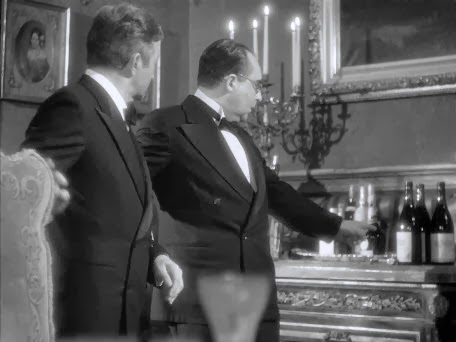
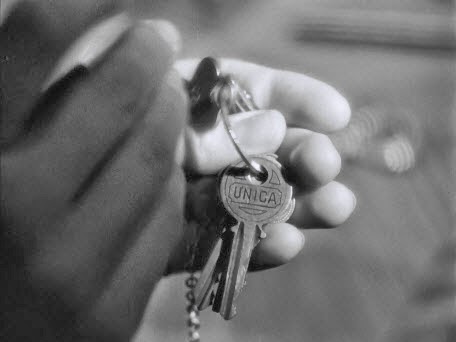






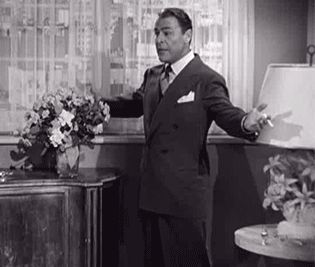










































































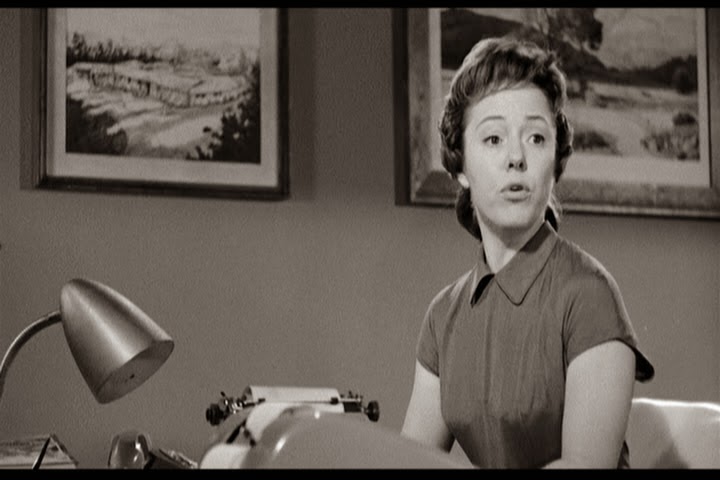

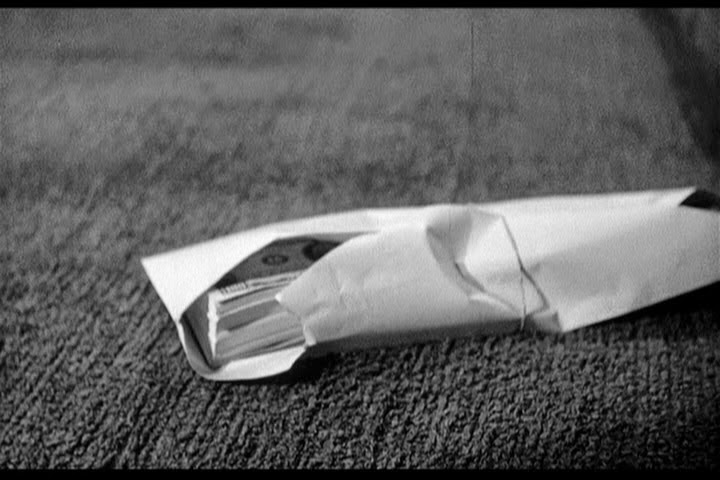





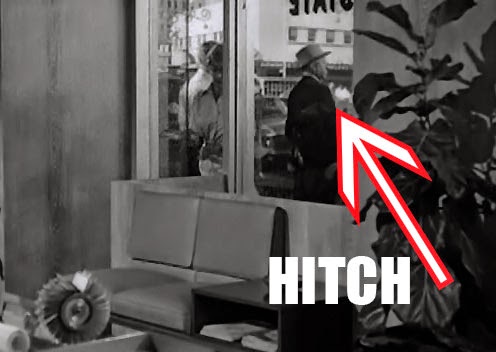
















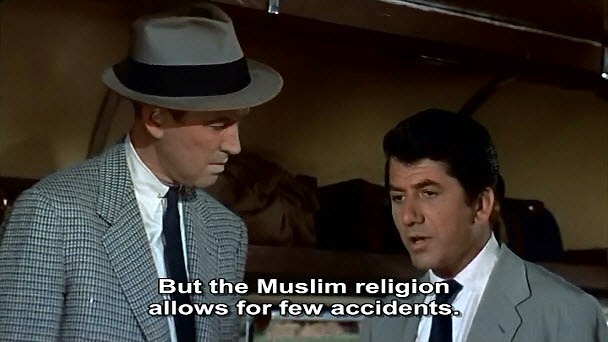




 !
!



































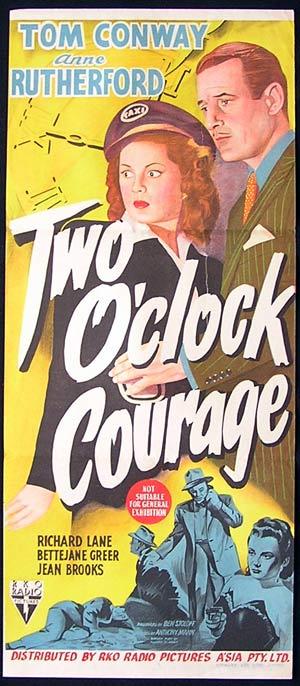









.jpg)




 .
.





 :
: